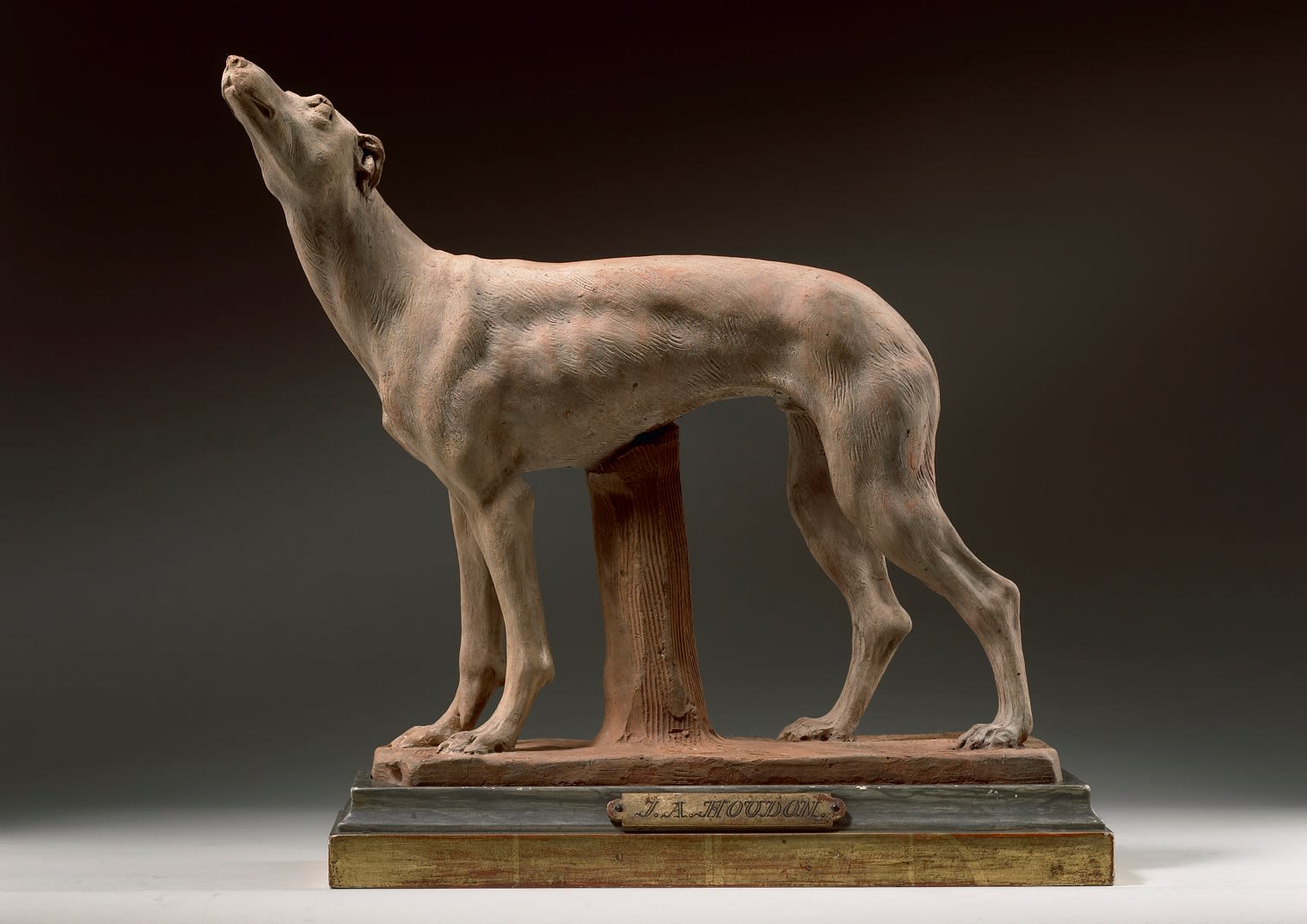-






JEAN-ANTOINE HOUDON
Greyhound (Levrier), Early 19th CenturyTerracottah x w. 30.3 x 28 cm
12 x 11 in.
overall. 33.5 x 37 cm
13 x 14 1/2 in.
Further images
Provenance
Fauchier-Delvigne Collection.
Exhibitions
Exposition du Centenaire de Houdon, Paris, Galeries Buvelot, 1928, no. 77
Literature
G. Giacometti, Un lévrier: terre cuite Originale de J. A. Houdon, Paris 1904.
A. Dayot, Review of: Giacometti 1904, in Supplément illustré de l’Art et les Artistes 4, no. 20 (1907), p. XXVII.
G. Giacometti, Le statuaire Jean-Antoine Houdon et son époque, vol. III, Paris 1913, pp. 70-72.
L. Réau, ‘Les expositions du Centenaire de Houdon’, in Gazette des Beaux-Arts, Paris, 1928, p. 342.
G. Giacometti, La vie et l’oeuvre de Houdon, Paris, 1929, vol. II, pp. 215-216.
L. Réau, Houdon: sa vie et son oeuvre, Paris, 1964, vol. II, p. 58, no. 194.
H. H. Arnason, Sculptures of Houdon, London, 1975.
H. C. Frick, Research Files on Jean Antoine Houdon, Works of Art, ‘Greyhound’, undated.











